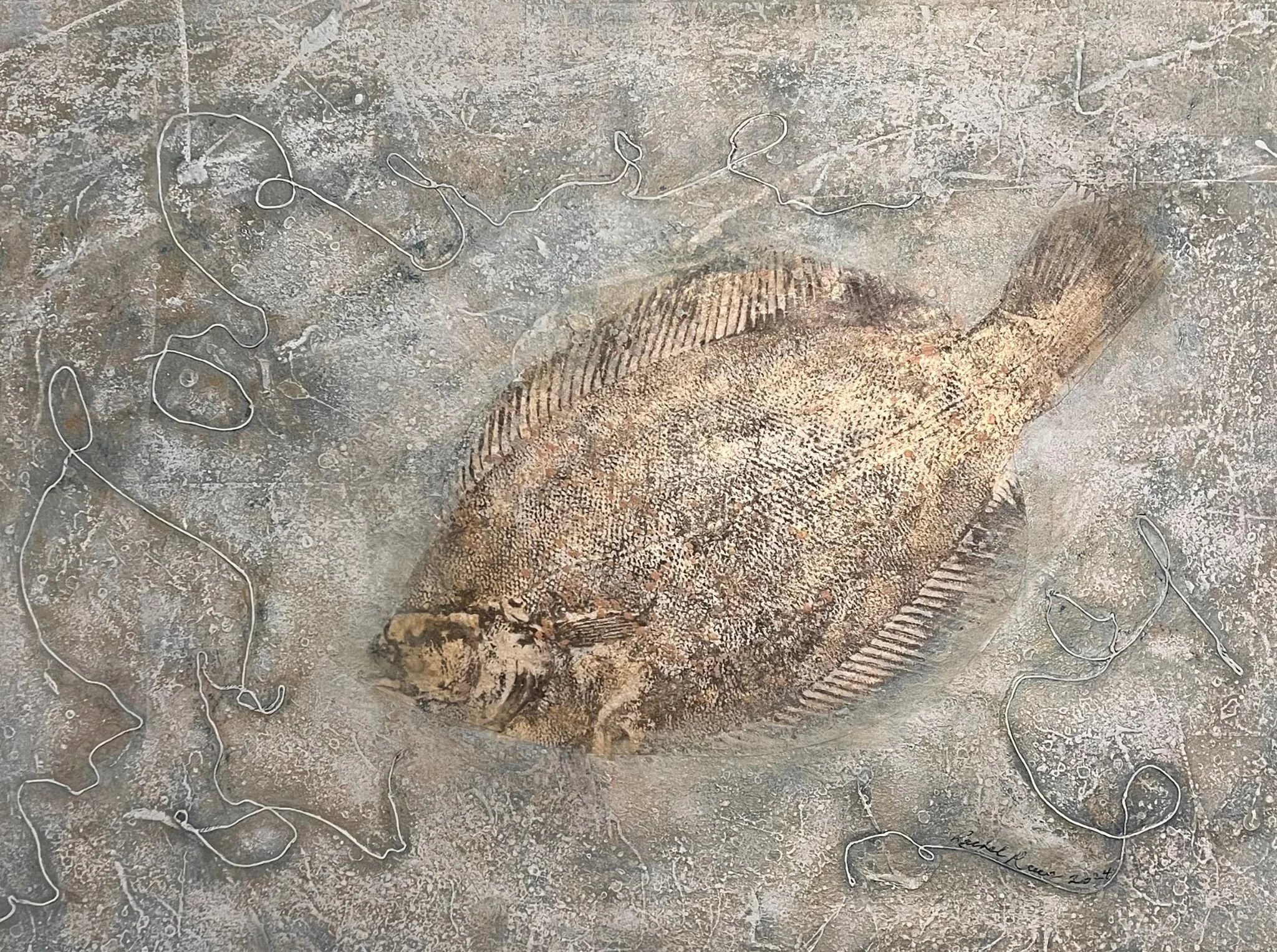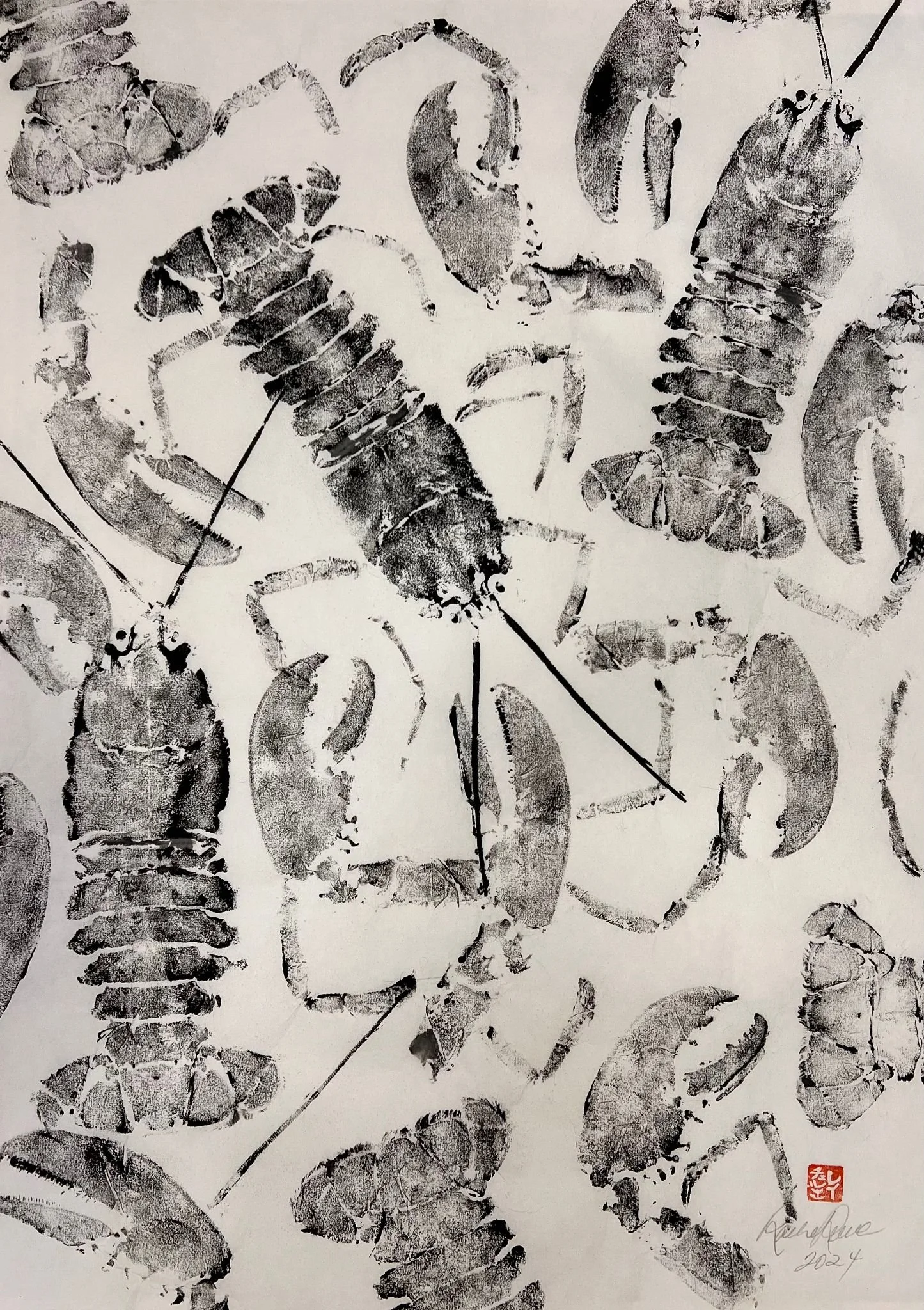Gyotaku: Printing Nature’s Stories in Ink and Paper
One of my favourite gyotaku prints is of a large striped bass my friend caught. He wanted a record of the experience, which is exactly how this art form began: as a way for Japanese fishermen to document their catches. The bass was so large—about 85 centimetres long—that I didn’t have paper big enough for it. My friend kept the fish in his freezer until I managed to buy a massive roll of washi, traditional Japanese paper. Once thawed, we spent the evening printing it with non-toxic ink, working late into the night.
When he later filleted the bass, we discovered a smaller fish in its stomach. Someone joked, “You should have printed it!”—a thought I loved, though the little fish might not have been intact.
Gyotaku resonates deeply with me because it merges my love of printmaking and nature. There’s no tool between artist and subject—you work directly with the fish, seaweed, or plant—so the process becomes tactile, intimate, and contemplative. Each print carries with it the essence of place: the sweet scent of woodruff in spring, pine needles in winter, the salt of the sea from lobster and seaweed, or the sharpness of a freshwater catch.
My gyotaku series builds on years of experimenting with printmaking techniques such as intaglio, monotype, woodcut, linocut, cyanotype, and botanical printing. I first tried gyotaku in 2015, after a friend shared a recent catch, and I’ve been exploring its possibilities ever since.
Each piece is both an artistic record and a tribute to our shared environment.
Fish themselves hold a special fascination for me. They belong to a realm we rarely glimpse—hidden beneath water’s surface, in ecosystems still being discovered. That mystery is part of their allure.
The Symbolism of Water
Water, the essence of life, has always carried profound symbolic meaning across spiritual and philosophical traditions. Its qualities—adaptability, flow, and renewal—mirror human experiences and invite us to embrace change with resilience.
Those attuned to the water element often embody emotional intuition, adaptability, and a natural ability to move with life’s currents while maintaining inner balance. Water reminds us of the cyclical nature of existence: rivers flowing to oceans, evaporation returning as rain, the eternal rhythm of beginnings and endings.
By honouring water’s symbolism, we are invited to see beauty in transitions, trust in renewal, and cultivate deeper spiritual and emotional harmony.
Lobster Gyotaku and a Time of Tension
In 2020, during the height of the pandemic, I created my first lobster gyotaku in response to a devastating event in Nova Scotia. A lobster pound was burned amid escalating fishery tensions, and news footage showed the haunting image of dead lobsters strewn across the pavement. I couldn’t get the image out of my mind.
To process what I had witnessed, I began methodically printing lobster after lobster—my hands and heart connecting with this ancient creature. The lobster, a symbol of resilience, longevity, transformation, and prosperity, has long been tied to the people and economy of Nova Scotia.
Through the act of hand-printing, I found a way to transform grief and anger into something else: gratitude, honour, and even playfulness. Each print became both a memorial and a celebration of the life force that sustains us.
Rachel Reeve, an interdisciplinary visual artist based in Nova Scotia’s Annapolis Valley has exhibited in Canada, Japan and the United States. Reeve received her BFA (Interdisciplinary) from NSCAD University.
The experience of living and working in Japan in the early 2000’s continues to influence her work. With an interest in the reverence toward nature that exists in Japanese art and culture, Reeve creates a hybrid of cultural connections with Nova Scotia. She explores elements of nature from symbolic, cultural and ecological perspectives, combining her skills in printmaking with her passion for nature.





